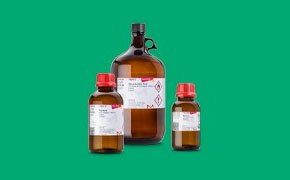Photocatalysis

Photoredox catalysis, or so-called visible light photoredox catalysis, has emerged as a powerful tool in organic synthesis, building upon the foundation set by early pioneers in the areas of radical chemistry and photochemistry. Photoredox chemistry forges new bonds via open shell pathways and facilitates the rapid assembly of complex products en route to new areas of chemical space.1-7 In the presence of visible light, photocatalysts can provide access to entirely new, previously inaccessible bond formations through a wide array of synthetic transformations including but not limited to cross-coupling, C–H Functionalization, alkene and arene functionalization, and trifluoromethylation.
Featured Categories
Your Solvent Source: Find the right fit with Supelco®, Sigma-Aldrich®, & SAFC® brands, covering analytical, lab, & biopharmaceutical uses. Order online.
We offer a comprehensive portfolio of heterocyclic building blocks, one of the largest and most diverse families of molecular fragments used in organic synthesis.
Find the basic components needed to drive your research forward in our portfolio of organic building blocks. Alkenesm alkanes, alkynes, arenes, allenes & more!
Photocatalysis utilizes visible light to activate a chemical reaction. Our extensive portfolio of catalysts and photoreactors enable consistent reactions in photoredox catalysis.
The powerful nature of photocatalysis arises, in part, from the ability to activate readily accessible, simple starting materials via single electron transfer pathways to provide access to reactive open shell species under mild reaction conditions. Upon formation, these distinct open shell species can be engaged in a wide variety of radical trapping/quenching events to ultimately deliver high-value products.
Visit our document search for data sheets, certificates and technical documentation.
Related Articles
- The application of radical chemistry towards organic synthesis is well-developed and wide-reaching, though often hampered by a dependence on toxic radical initiators.
- Synthetic chemists’ interest in photocatalysis has grown dramatically over the last decade, with an increasing number of leading research groups contributing innovative new methods and applications for utilizing visible light in organic synthesis.
- Csp2- and Csp-hybridized coupling reactions are established catalytic approaches. However, multi-step Csp3- and Csp2-coupling reactions of boronic acids and related derivatives are still limited by ineffective two-electron transmetalation reactions.
- While Markovnikov alkene reactivity is very well developed and utilized commonly in the synthesis of commodity and research chemicals, catalytic access to the anti-Markovnikov-selective adducts is a much less-developed endeavor.
- See All (7)
Related Protocols
- Materials and procedure Step-by-Step Guide for Photocatalysis High-Throughput Reaction Screening Kit
- The Photo KitAlysis Photoreactor Controller allows you maximum control of photocatalysis reactions.
Find More Articles and Protocols
How Can We Help
In case of any questions, please submit a customer support request
or talk to our customer service team:
Email custserv@sial.com
or call +1 (800) 244-1173
Additional Support
- Chromatogram Search
Use the Chromatogram Search to identify unknown compounds in your sample.
- Calculators & Apps
Web Toolbox - science research tools and resources for analytical chemistry, life science, chemical synthesis and materials science.
- Customer Support Request
Customer support including help with orders, products, accounts, and website technical issues.
- FAQ
Explore our Frequently Asked Questions for answers to commonly asked questions about our products and services.
References
To continue reading please sign in or create an account.
Don't Have An Account?

